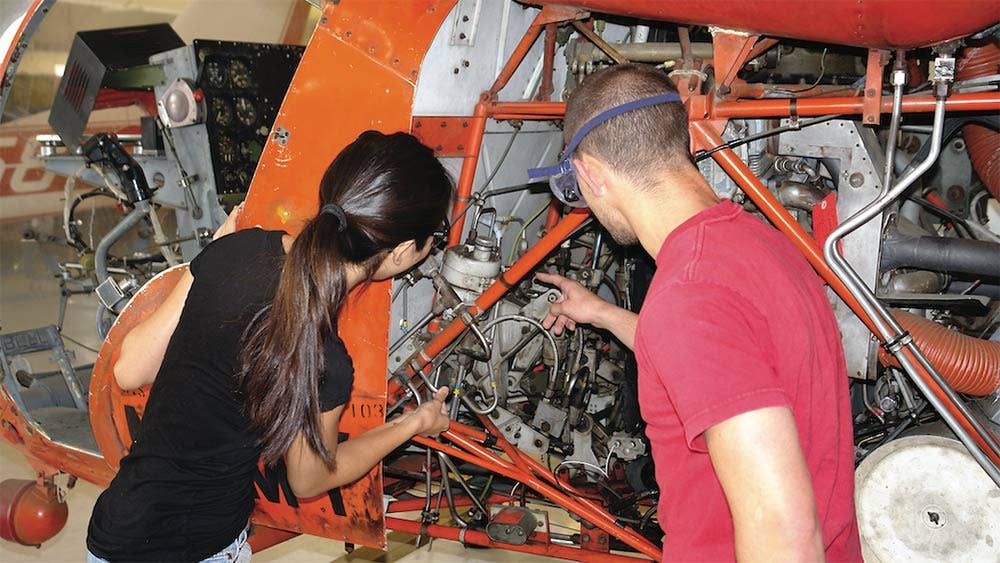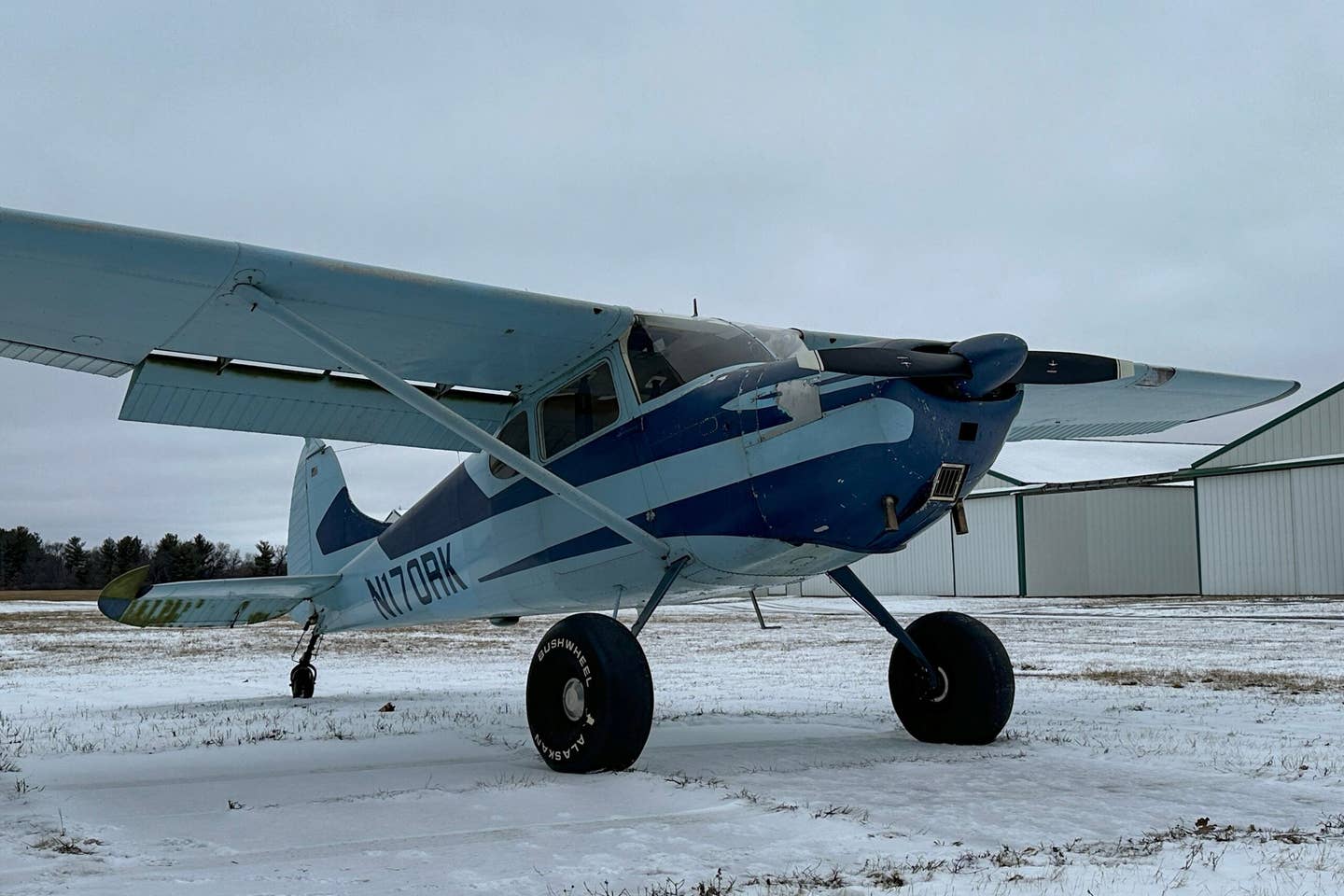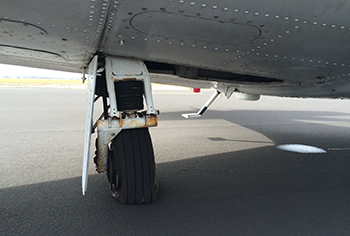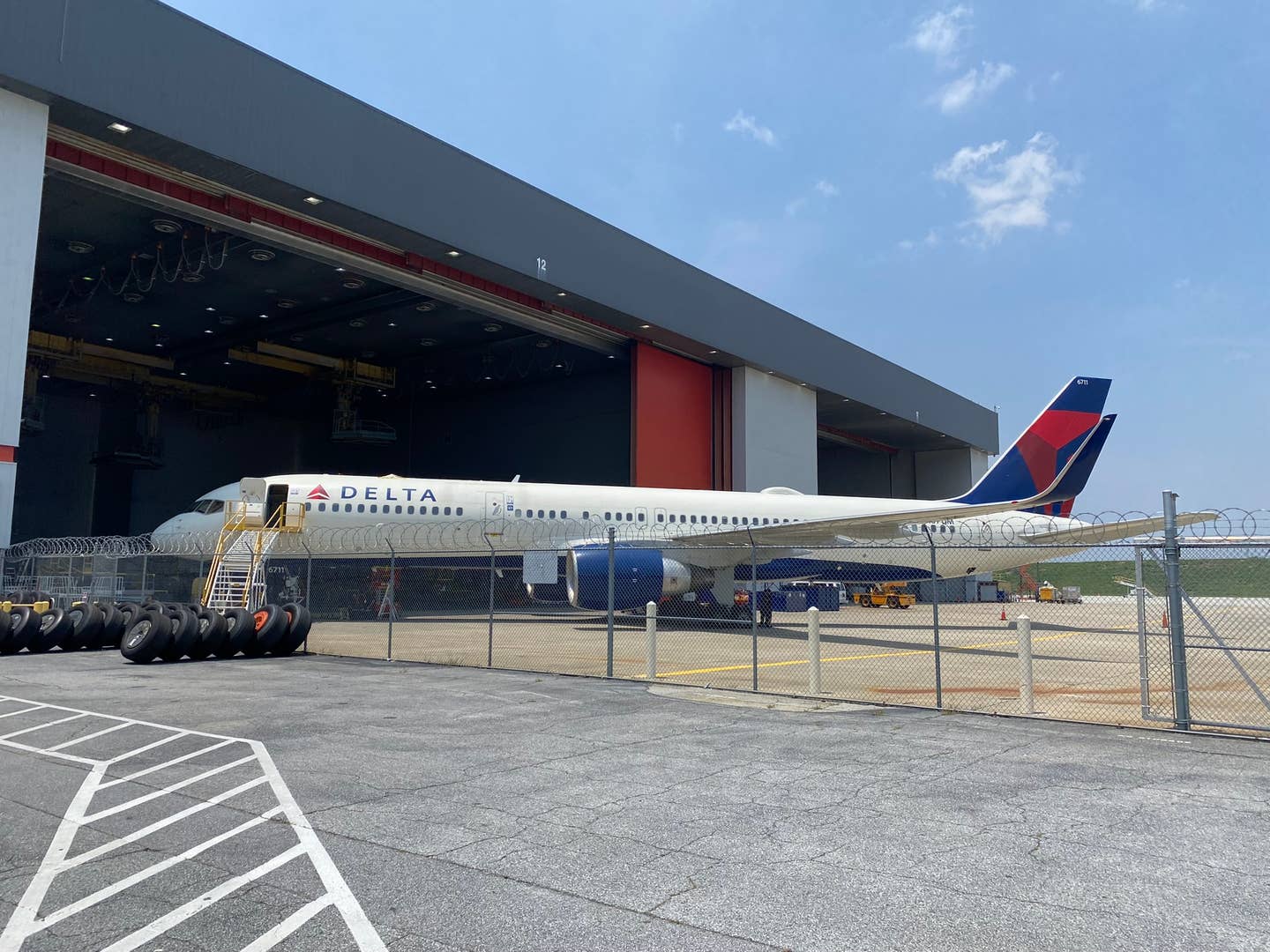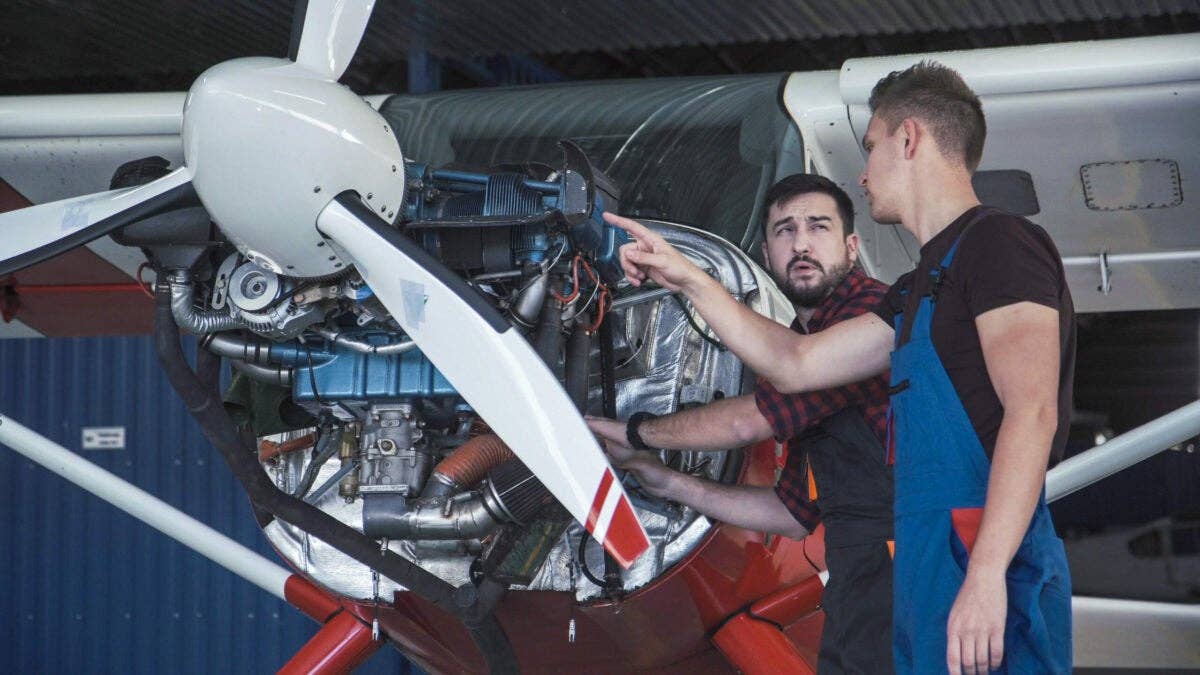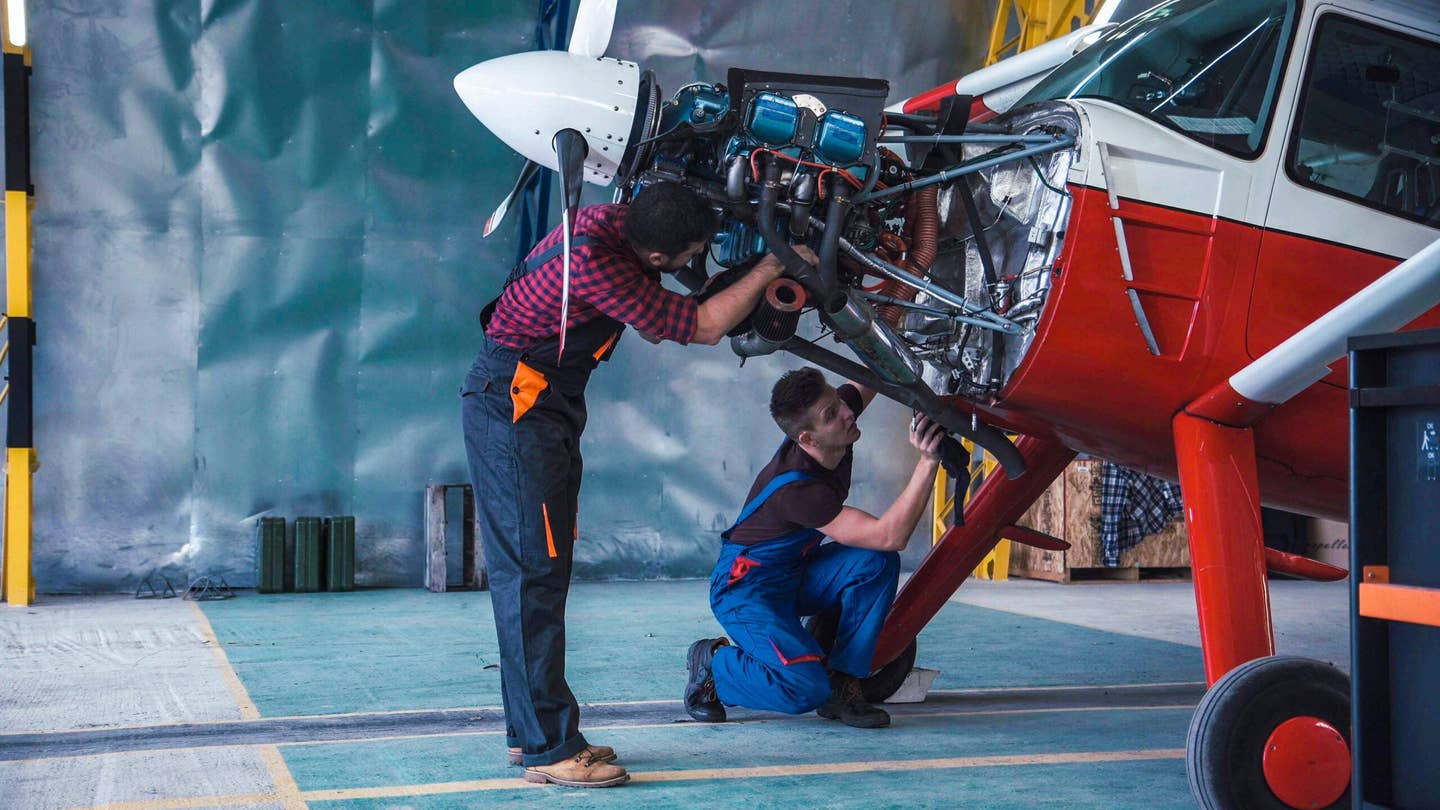How You Can Forge a Career Path in A&P Maintenance
When contemplating a career in aircraft maintenance, there are several variables to consider.
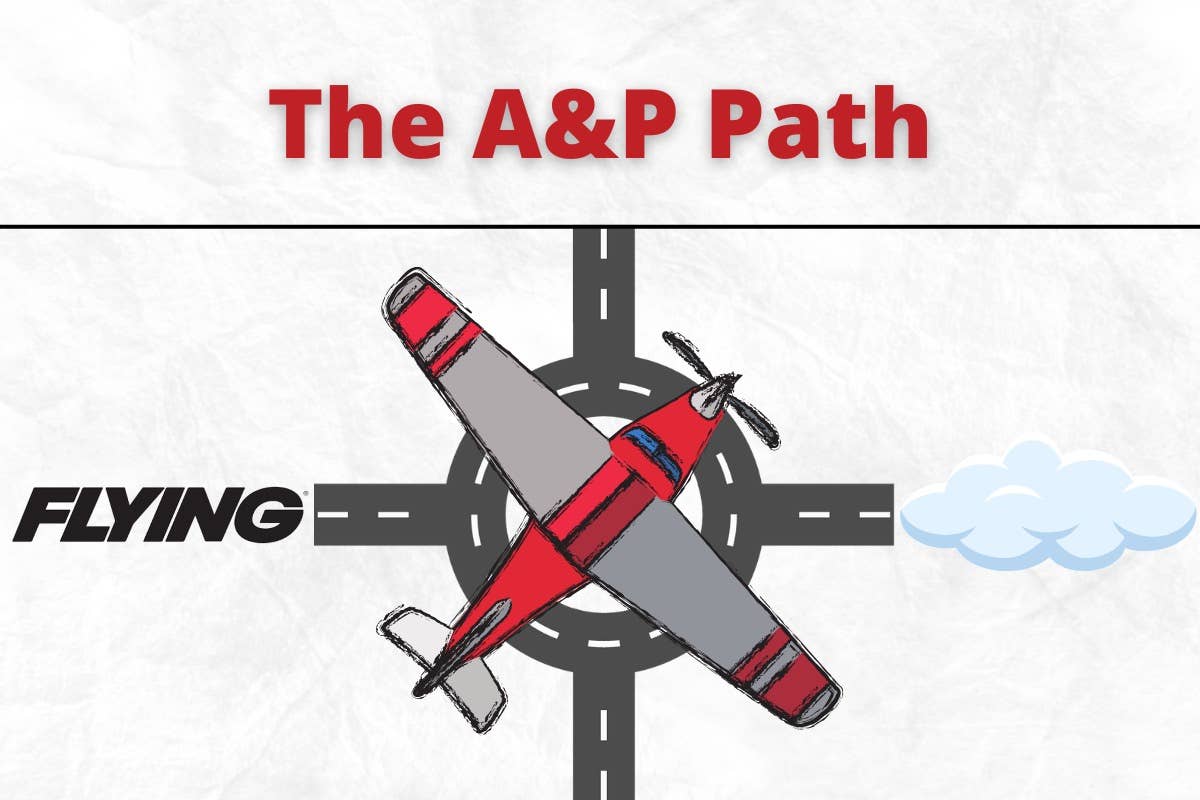
[Courtesy Mia Scarbrough)
The morning always comes earlier if you have stayed out all night. When some think back on their college days, there are fond memories of bar hops, coed parties, and the logistical beauty of 3 p.m. classes. Such luxuries are not afforded to the airframe and powerplant (A&P) students. We are a different breed of college student and have the emotional scars to prove it. Thankfully, our curriculum in the late 1900s did not include human factors, or I would have failed it miserably.
The working A&P student endures a version of their version of the Crucible [the Marine Corps' culminating physical challenge of recruit training]; only it lasts two years, not 54 hours. Before you Marine Corps types come at me, I trained with you guys at NAS Millington and have the utmost respect for your work on and off the base. Let’s leave it at that for now. Ooh-rah. Did the Aviation Structures Mechanic training I received in the Navy help prepare me for A&P School? Sure it did, in technical skill and the ability to twist safety wire on three hours of sleep.
Staying out all night at a bar—sleeping until 10:50 a.m. to make an 11 a.m. class with optional attendance—is a far cry from working on the flightline until well after midnight only to have your butt in the seat at 7:30 a.m. the following day for the mandatory roll call. We are not the same. OK. Those who read this far must want to know about becoming an aircraft mechanic, so let’s get to it.
What To Consider
Autumn is upon us, and with the changing season, high school seniors from all walks of life must map a new path. Some are college bound, 529 savings plans fully funded by grandparents, and the most significant decision looming is which Greek letters will adorn their monogram. Others are not so sure and suffer from occupational insecurity. Some will enter the workforce immediately, either in retail or food service. Those jobs are typically low paying and are at risk of replacement from a dot-com or self-serve kiosk. Gary V preaches going to yard sales and flipping Pokémon cards on eBay. Good luck with that.
The trades are an excellent way for those with a vocational skill set to earn a decent living. A friend of mine remodels houses, and he couldn’t quote me on a job because he is in Portugal with his family on vacation. My neighbor’s son is 19, is in tech school for welding, and will start his first job at $55 per hour. What about working on airplanes, you ask? Great question; read on ye seeker of knowledge.
First and foremost, let’s crack into the data. Numbers drive everything these days, from stoplights to Starbucks; everyone needs to see the data before making a decision. The United States Bureau of Labor Statistics (BLS) recently published its statistics on Aircraft and Avionics Equipment Mechanics and Technicians. The BLS also has a link on how to get started.
When contemplating a career in aircraft maintenance, there are several variables to consider. Deciding to become a certificated aircraft mechanic is a big step. The FAA Advisory Circular AC 65-11B Airframe and Power Plant [sic] Mechanics Certification Information is a good jumping-off point. This AC is an excellent guide that addresses the most common questions asked by those considering the A&P path.
The next stop on your journey is AC 65-2D Airframe & Powerplant Mechanics Certification Guide. Did you notice how the FAA used two versions of the term powerplant? That is not the first time they will contradict themselves. My apologies to any feds who may be reading. Please know that this comment is not directed toward you.
A&P School
A great way to earn your A&P is to enroll in a Part 147 AMTS school. Although each follows the same FAA guidelines, they are widely different in their scope and scale of operation. Do your homework and ask a million questions. Peruse some websites that cater to mechanics and query their school experience.
Some A&P schools offer perks to their students. My buddy at work and former customer of my engine shop, Skip Moore, went to Spartan College of Aeronautics and Technology and eventually landed a gig at Republic Airways. We swapped stories today at lunch, and he told me that Spartan provided its students with tool kits for school.
The A&P school I attended made you procure your own tools, although they did offer a program sponsored by Snap-on tools, and that investment is still paying dividends today. Only my rollaway now sits in my garage, not a hangar, and it allows me to change tires on my golf cart instead of a Piper Cheyenne.
Middle Georgia State University’s Aviation Maintenance Technology (AASAMT) allows the student to obtain an Associate of Applied Science in Aviation Maintenance Technology in conjunction with the A&P certificate.
My alma mater, Embry Riddle Aeronautical University (ERAU), offers a path beyond the certificate and will help to considerably broaden your career horizon. I completed a bachelor’s degree in aviation maintenance management and could go on to obtain a master’s if I choose to do so. They also now have Ph.D. programs. Now, everyone, just cool your jets for a minute here. The world is not ready for Dr. Scarbrough, and I have way more fun writing for you guys.
Also, be aware that this month a new rule takes effect for aviation maintenance technician schools (AMTS) and hopes to modernize instruction to better align with the current state of the industry. This rule overhauls Part 147 mentioned above.
Military
I had the best of both worlds. Having trained and worked as an aircraft structures mechanic in the Navy, I could hit the flightline running when I arrived at A&P school. I was able to serve in the reserves while I was in school. Steven Whatley, one of my colleagues at work, attended ERAU after he left the Air Force. He did not get an A&P from school; he wanted the degree first. How did he do it? Keep reading (USAF). We both took a military path and arrived at the same destination: certificated aircraft mechanic.
Each Department of Defense entity has specialized programs to help members transition to the civilian world, including those in aircraft maintenance. The U.S. Navy (USN) Credentialing Opportunities On-Line (COOL) program offers intel on transitioning experience from the military to the civilian world.
The Department of Transportation (DOT) site Veterans Transportation Career Center has a detailed section for Aviation Maintenance Technician.
Another path to working as a certificated aircraft maintenance technician is to sign on with an airline, a maintenance, repair, and overhaul (MRO) operation, or a fixed base operator (FBO) that values military service and, most importantly, will help guide you to certification. One such entity is PSA Airlines and its Maintenance Military Transition Program, which helps with a roadmap, training, and even tuition assistance.
Experience
There is another way to gain your certification—old fashioned hard work. A&P school is not for everyone, maybe there is not one close by, or your family does not have the funding. Perhaps you need to work to make ends meet, and time constraints keep you from pulling double duty. I was lucky; the GI Bill paid for my school, and my mother gave me a place to stay and cooked and packed all three meals I would eat during the day.
The feds address the rules and regulations of using documented work experience to get certified. Remember Whatley from above? He used documented work history from his time in the USAF and his time working as a civilian contractor at Robins Air Force Base to apply to take the exams. Civil Service provided a representative to review everything and provide him with a letter.
When I owned the 145 repair station, I signed off two guys to take their powerplant tests. I couldn’t offer an airframe letter because we did not do airframe work.
Are you ready to run out and score your ticket to be an A&P mechanic? Maybe you could hang out your shingle to start offering 100-hour inspections, tire changes, and magneto timing? Like any profession, the job has highs and lows. Watch this space as we continue to unpack all things aircraft maintenance. And as always, if you have a question or comment, please reach out to me at editorial@flying.media.

Sign-up for newsletters & special offers!
Get the latest FLYING stories & special offers delivered directly to your inbox

